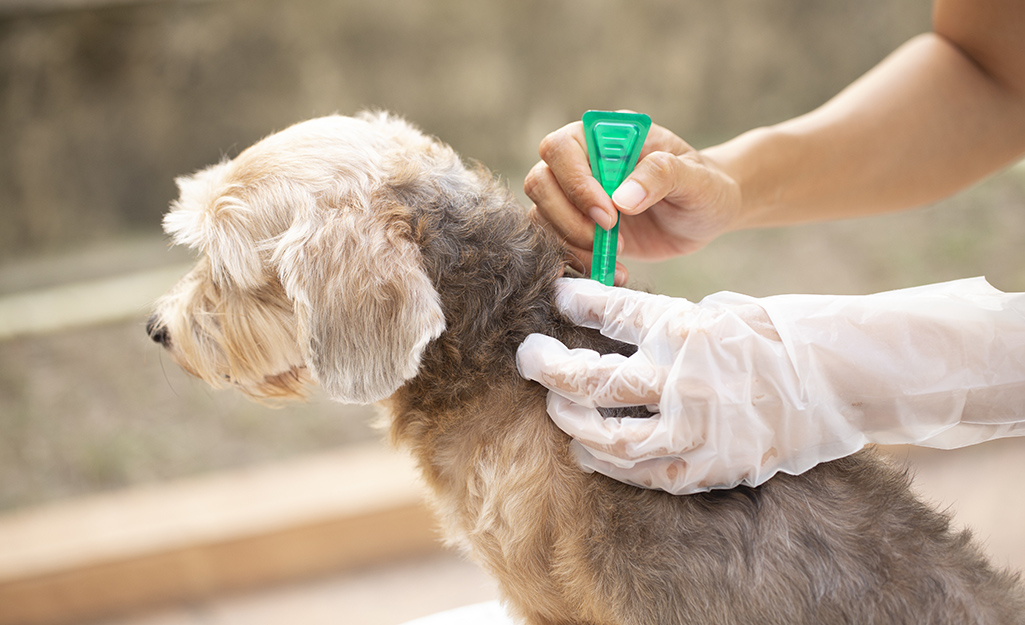Fleas are a common pest that can cause problems for both dogs and cats. These tiny creatures are wingless insects that feed on the blood of animals, including pets and humans. If left untreated, a flea infestation can quickly spread throughout your home, causing discomfort and potential health issues. In this article, we will discuss the identification, life cycle, and habits of fleas, as well as various methods to control and prevent them.
Identification
Fleas are very small, measuring about 1/8 of an inch in length. They are typically brownish in color and have a flattened body shape, which allows them to move easily through the fur of their host. The most common species of flea that infests dogs and cats is the cat flea (Ctenocephalides felis). However, other species of fleas, such as dog fleas, may also be present in some cases.
Life Cycle and Habits
Understanding the life cycle and habits of fleas is crucial for effective flea control. The flea life cycle consists of four stages: egg, larva, pupa, and adult flea. Prevention and control methods should target each of these stages to eliminate fleas completely.
Prevention
Preventing a flea infestation is always better than dealing with one. There are several measures you can take to prevent fleas from infesting your pets and home.
Firstly, regularly inspect your pets for fleas and ticks. Use a flea comb to check for signs of fleas, such as flea dirt (feces) or live fleas. If you notice any signs of fleas, consult a veterinarian for proper treatment.
Inspection
In addition to inspecting your pets, it is important to thoroughly inspect your home for any signs of a flea infestation. Pay close attention to areas where your pets spend the most time, such as bedding, carpets, and furniture.
Look for signs of flea dirt, which appears as tiny black specks on surfaces. This is actually dried blood left behind by the fleas. You may also come across flea eggs, which are small, white ovals that resemble grains of salt.
Sanitation
Maintaining proper sanitation in your home is key to preventing and controlling fleas. Regularly vacuuming your carpets, furniture, and pet bedding can help remove eggs, larvae, and pupae. Be sure to dispose of the vacuum bag or empty the canister outside your home to prevent fleas from re-infesting.
Washing your pet’s bedding in hot water can also help kill any fleas or eggs present. Additionally, keeping your home clean and free of organic debris can make it less hospitable for fleas to thrive.
Repellents
Using flea repellents can provide an extra level of protection against flea infestations. There are various types of repellents available, including sprays, powders, and spot-on treatments. These products work by repelling fleas and preventing them from biting your pets.
Biologicals
Biological control methods involve the use of natural predators or parasites to reduce flea populations. One example of a biological control method is the use of nematodes, which are microscopic worms that feed on flea larvae.
Botanicals
Botanical control methods involve the use of plants and plant-based products to repel or kill fleas. Some commonly used botanicals for flea control include neem oil, lavender, and rosemary. These natural ingredients can be used to make homemade flea sprays or added to pet shampoos.
Mechanical/Cultural Control
Mechanical and cultural control methods aim to physically remove or alter the flea’s habitat to prevent their development and reproduction.
Regularly grooming your pets and brushing their fur can help remove fleas and their eggs. In addition, keeping your yard clean and free of debris can reduce flea populations in outdoor areas.
Chemical Control
Chemical control methods involve the use of insecticides to kill fleas and prevent infestations. There are various options available for both pet and home treatments.
 Pets
Pets
There are numerous flea control products designed specifically for pets, including spot-on treatments, oral medications, and flea collars. These products contain insecticides that kill fleas upon contact or ingestion.
Homes
For efficient control of fleas in your home, it may be necessary to use professional pest control services. These professionals have the knowledge and expertise to effectively treat your home and eliminate flea infestations.
Outdoors
If your pets spend time outdoors, it is important to treat your yard as well. Flea control products for outdoor areas can help eliminate fleas in your garden, patio, or yard.
In conclusion, treating your pet for fleas is essential for their health and well-being. Fleas not only cause discomfort through their bites but can also transmit diseases and parasites, such as tapeworms. By following proper flea control and prevention methods, you can ensure a flea-free environment for you and your pets.
Do fleas spread to humans?
Fleas are small, wingless insects that feed on the blood of animals, including humans. While fleas are primarily known for infesting pets, such as dogs and cats, they can also bite humans and potentially spread diseases. Fleas are able to transmit diseases to humans through their bites, as they often carry bacteria, viruses, or parasites from other animals. The most well-known disease that can be spread by fleas is the bubonic plague, also known as the Black Death. This disease caused a devastating pandemic in the 14th century, claiming millions of lives. Nowadays, cases of the bubonic plague are rare, but it is still important to address flea infestations promptly to prevent any potential transmission of diseases. Additionally, fleas can also cause allergic reactions in humans. Flea bites may result in redness, itching, and swelling, which can be uncomfortable and irritating. In some cases, these bites may lead to secondary infections from scratching. Therefore, it is recommended to implement measures to prevent fleas from spreading to humans, such as regularly treating pets with flea preventive products and maintaining a clean environment in your home. If you suspect a flea infestation or experience any symptoms after being bitten by a flea, it is advisable to consult a medical professional.
 Treatment for flea bites
Treatment for flea bites
Flea bites can be incredibly itchy and irritating, causing discomfort and potential infection if scratched excessively. Therefore, it is important to treat flea bites promptly and effectively. The first step in treatment is to wash the affected area with soap and water to cleanse it and prevent infection. Afterward, applying a cold compress or ice pack can help reduce inflammation and soothe the itching. Over-the-counter anti-itch creams and ointments containing hydrocortisone can also provide relief. It is crucial to avoid scratching the bites, as this can worsen the itching and increase the risk of infection. To further prevent infestation, it is necessary to wash all bedding, clothing, and other fabrics in hot water and vacuum carpets and upholstery regularly. Using flea control products on pets and treating the home environment with insecticides are additional measures to consider. If the symptoms persist or become severe, it may be advisable to seek medical attention. A healthcare professional may prescribe stronger topical treatments or oral medications to alleviate symptoms and help prevent infection. Keeping the affected area clean and dry, avoiding scratching, and following these steps will aid in the healing process and prevent further flea bites.
FAQ
Q: What is flea control?
A: Flea control refers to the methods and techniques used to prevent and eliminate fleas from infesting your pet and home.
Q: What are fleas?
A: Fleas are small parasites that feed on the blood of cats, dogs, and other animals. They go through a life cycle that includes eggs, larvae, pupae, and adults.
Q: What is a flea larva?
A: A flea larva is the second stage in the life cycle of a flea. It is a small, worm-like creature that feeds on organic matter.
Q: How do fleas infest pets?
A: Fleas can infest pets when they jump onto them from infested environments or other infested animals.
Q: How can I control fleas?
A: To control fleas, you can use flea treatments, such as sprays, collars, or spot-on treatments. It is also important to regularly clean and vacuum your pet’s living areas.
Q: What can pet owners do to prevent flea infestations?
A: Pet owners can prevent flea infestations by regularly treating their pets with flea control products, keeping their living areas clean, and avoiding contact with infested animals.
Q: What is a flea larvae and pupae?
A: Flea larvae and pupae are stages in the flea life cycle. Larvae are worm-like creatures that feed on organic matter, while pupae are the cocoons in which fleas develop into adults.
Q: Can fleas transmit diseases?
A: Yes, fleas can transmit diseases such as flea allergy dermatitis and certain types of parasitic infections.
Q: What are the most effective treatments for fleas?
A: The most effective treatments for fleas are those that target both adult fleas and their eggs, such as insect growth regulators and prescription medications.


 Pets
Pets Treatment for flea bites
Treatment for flea bites



